If eight tourists died on Phuket in clashes with tuk-tuk and taxi drivers in eight weeks, the Army would be called in to replace Phuket's police.
Eight people have died needlessly on Phuket over the past eight weeks. And because they have drowned while swimming at Phuket's famous beaches, nobody takes responsibility.
The families mourn, the bodies of the tourists who came to Phuket to have fun are flown home in boxes, and the myth that Phuket is a safe year-round beach destination is perpetuated.
''It's clearly a large problem for an island that encourages people to come to enjoy themselves on the beaches even during this deadly season,'' a senior marketing official, who preferred to stay anonymous, said today.
What's shameful is that this is not a one-off tragedy for Phuket, no statistical aberration. Last year, eight tourists died in roughly the same monsoon onset period on the island's top swimming beaches.
There was no improvement to warnings, no ''community action plan'' to prevent the same thing happening this year.
And even more alarming, there is as yet no action plan to prevent the same thing happening next year. Will eight more tourists become sacrifices to the sea?
This annual toll of tourists who die unnecessarily in the surf between May and August is becoming Phuket's most enduring shame.
In the latest tragedy this week at Karon beach, the beach with the greatest number of tourist drownings, seven people all found themselves in trouble in the water at the same time.
Two people managed to swim to shore. The other five needed the help of lifeguards, and for one of those five, the help came too late.
So a man from Syria joined other victims from the US, from Russia, from India and from Belgium among this season's martyrs to Phuket's concept of year-round beach tourism.
A witness on Karon beach this week told Phuketwan how laughable it is to see lifeguards trying to explain to burly Russians that the waters are dangerous.
''The lifeguards say, 'If you go in, you will die!' They become quite agitated and sometimes swear in Thai.
''But of course, the more a large Russian is told he can't do something, the more likely he is to do it.''
The answer, say water safety experts, is for all Phuket resorts, especially those along the shorefronts, to become more responsible. Some do try, but most of them show no signs of caring.
The Hilton Phuket Arcadia Resort and Spa, where the Syrian man was staying, has warning signs and notations in documents and a staff who inform guests about the dangers in ''casual conversations,'' says the general manager.
Along the beach, according to one guest, the Woraburi Resort - like many others - does not tell its guests about the dangers in the water just across the other side of beach road.
A leading water safety expert is calling for a Water Safety Summit on Phuket to encourage all resorts to give Phuket lifeguards the help they need to save lives.
Phuketwan supports that call and will explain in Part Two what should happen next. The reason why is obvious.
Phuket's reputation as a safe beach destination will go under unless something is done. Here's why:
August 5 Syrian Wael Zakhour, 45, drowns at Karon beach with red flags clearly evident all along the beach. Four other swimmers are fortunate to be rescued by lifeguards. Two more manage to make their own way to shore.
July 21 Russian Dmitry Onishchenko, 32, arrives on Phuket and drowns the following day with red flags flying all along Karon beach.
July 7 American surfer, Mark Carroll, 60, drowns or suffers a heart attack at Kata beach. He had been in Thailand one day. An ambulance takes 40 minutes to arrive.
July 2 Russian Gym Khao Khay, 32, dies in Vachira Phuket Hospital, effectively the fifth drowning victim on Phuket in the space of four days in late June.
June 25 Phuket's lifeguards string red flags across dangerous stretches of 13 Phuket beaches, effectively closing the most dangerous parts of the beaches.
June 24 Phuket authorities react by holding a crisis meeting at Phuket Provincial Hall in Phuket City.
June 23 Phuket man Peerapon Nunark, 19, becomes drowning number four in four days when he disappears beneath the surf at Layan beach. Russian Gym Khao Khay is pulled from the surf at Karon in a coma.
June 22 Indian tourist Ramesh Chand Singhal, 49, goes into the surf at Kata with a bodyboard and drowns.
June 20 Two drownings occur within one hour as Belgian Laurent Jacques Leopold Wanter, 42, drowns at Laem Singh beach and Aleksande Poleshchenko, 29, drowns soon after at Patong beach.
June 19 Chinese tourist Chen Peng, 36, dies after being struck by a speedboat propeller in the water at scenic Pileh Bay, near Phi Phi.
June 18 Chinese tourist Ran Li, 23, drowns on a day-trip outing to Racha island.
June 14 Eighteen European envoys meet on Phuket and request more effort to improve marine and beach safety.
May 29 Chinese Ambassador Guan Mu makes a strong public plea on Phuket for more warnings - at the airport, at resorts and at beaches - to save more lives.
May 28 A Young Chinese tourist drowns on a day-trip from Phuket to Pai island.
May 21 British tourist Jeremy Thomas O'Neill, 37, is found dead on Patong beach about 6am. It is believed he may have misjudged the strength of the waves in darkness.
July 24 British tourist Peter John Cook, 47, drowns at Patong beach on an early morning swim, the third recent death near the same spot on Patong beach in the space of a few weeks.
June 30 Chinese tourist Tinqi Li, 19, drowns while swimming at night at Patong. A jet-ski rider finds him and pulls him back to shore but cpr fails to revive him.
June 19 Unidentified Western man drowns at Nai Harn as red flags fly. Two Chinese tourists, a man and a woman, are rescued. The man is later identified as Rasmus Beyemann, 72, a Dane who had been living on Phuket for five years.
June 12 American university student Joshua Shane, 21, goes missing at Patong on a late-night swim with friends. His body is found on June 14. Another swimmer requires hospital treatment.
June 8 A tourist from Egypt and a tourist from Kuwait, visiting Phuket, go on a whitewater adventure tour north of Phuket with friends. The friends are rescued when a monsoon-boosted stream overturns their raft. The two men drown.
June 2 A young Thai visitor from Bangkok, Austatiwood Prommarat, 18, disappears into the surf at Patong after he and a relative allegedly hang their shirts on a warning red flag before going into the water. The relative is rescued.
May 31 An American kite surfer collapses in the shallows at Nai Harn, Phuket's most southerly beach, and dies soon after. His death may not have been a drowning but possibly a heart attack.
May 30 Russian tourist Denis Korobogatov, 33, appears to be caught by a ''rip'' tide at Karon beach and is dragged to his death.
May 27 Phuket's lifeguards, absent from Phuket beaches for seven weeks because of a contractual dispute, return to daily patrols of Phuket's 13 most popular west coast beaches.
May 20 On a day's outing to difficult-to-access Freedom Beach, between Patong and Karon, Frenchman Stephane Dacosta, 32, disappears into the water. He washes ashore at nearby Kata beach a day later.
May 18 With lifeguards absent from all of Phuket's beaches, Angelo Piazza, 53, disappears into the surf at Karon beach, south of Patong, and drowns.
The figure of eight beach drownings on Phuket between May 18 and July 24 contrasts with just five drownings recorded for the whole of Phuket - including deaths in ponds and canals as well as beaches - in the first four months of 2012.

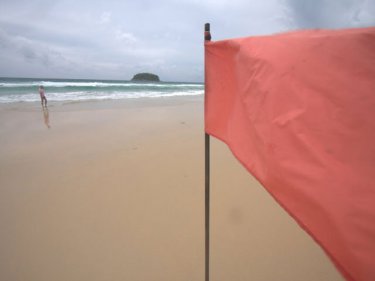

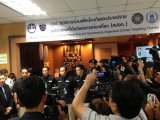


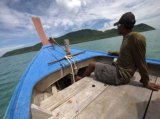

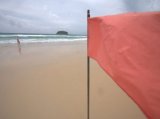


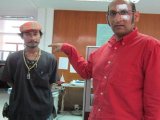
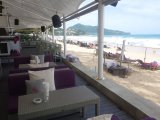
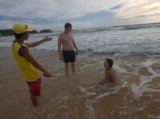



If eight tourists died from dengue fever on Phuket within eight weeks, all of Phuket's Public Health Department bosses would be transferred out immediately.
If eight tourists died on Phuket in clashes with tuk-tuk and taxi drivers in eight weeks, the Army would be called in to replace Phuket's police.
I very much doubt it!
Posted by eddy on August 8, 2013 10:05